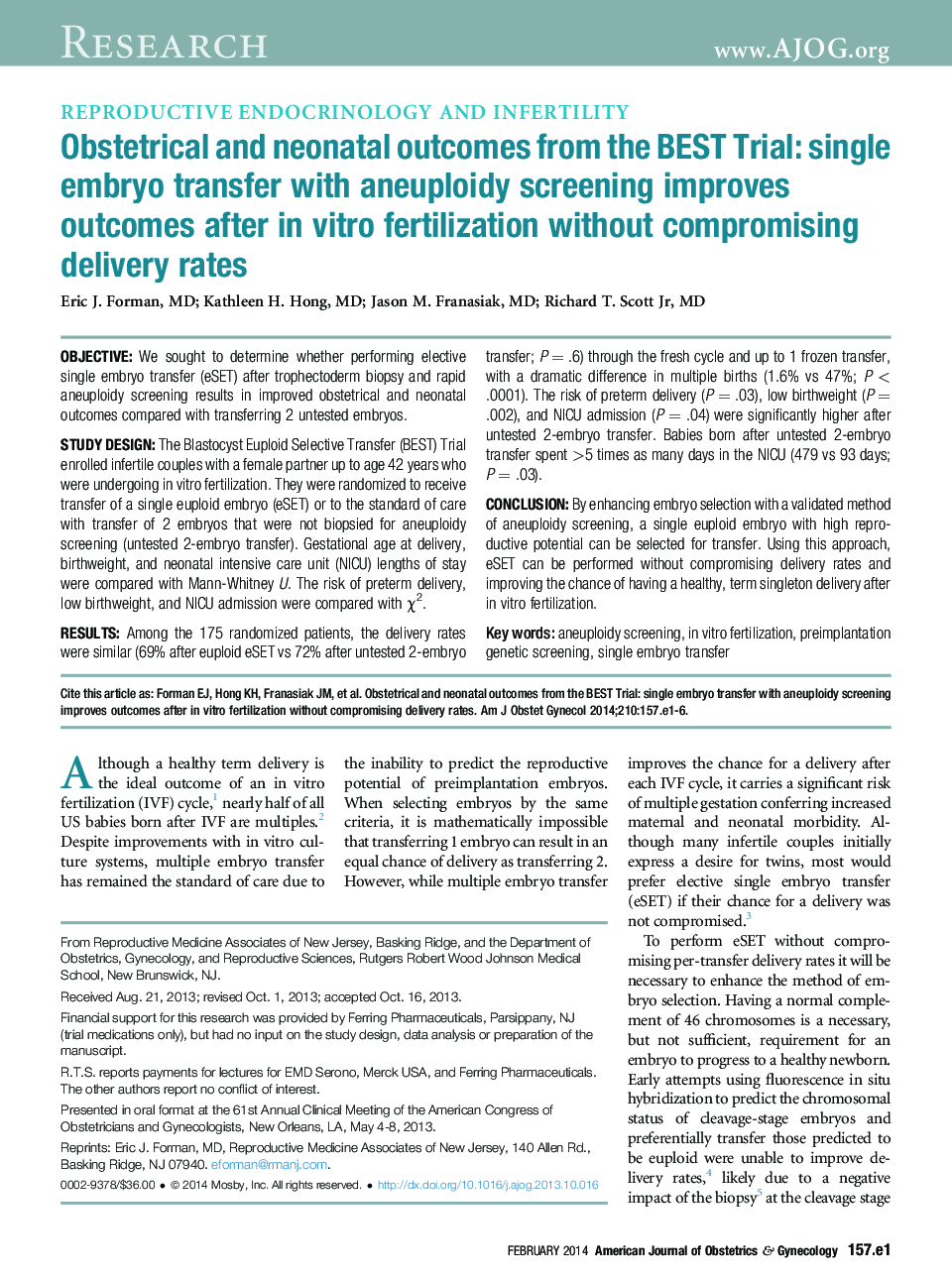| Article ID | Journal | Published Year | Pages | File Type |
|---|---|---|---|---|
| 6146029 | American Journal of Obstetrics and Gynecology | 2014 | 6 Pages |
ObjectiveWe sought to determine whether performing elective single embryo transfer (eSET) after trophectoderm biopsy and rapid aneuploidy screening results in improved obstetrical and neonatal outcomes compared with transferring 2 untested embryos.Study DesignThe Blastocyst Euploid Selective Transfer (BEST) Trial enrolled infertile couples with a female partner up to age 42 years who were undergoing in vitro fertilization. They were randomized to receive transfer of a single euploid embryo (eSET) or to the standard of care with transfer of 2 embryos that were not biopsied for aneuploidy screening (untested 2-embryo transfer). Gestational age at delivery, birthweight, and neonatal intensive care unit (NICU) lengths of stay were compared with Mann-Whitney U. The risk of preterm delivery, low birthweight, and NICU admission were compared with Ï2.ResultsAmong the 175 randomized patients, the delivery rates were similar (69% after euploid eSET vs 72% after untested 2-embryo transfer; P = .6) through the fresh cycle and up to 1 frozen transfer, with a dramatic difference in multiple births (1.6% vs 47%; P < .0001). The risk of preterm delivery (P = .03), low birthweight (P = .002), and NICU admission (P = .04) were significantly higher after untested 2-embryo transfer. Babies born after untested 2-embryo transfer spent >5 times as many days in the NICU (479 vs 93 days; P = .03).ConclusionBy enhancing embryo selection with a validated method of aneuploidy screening, a single euploid embryo with high reproductive potential can be selected for transfer. Using this approach, eSET can be performed without compromising delivery rates and improving the chance of having a healthy, term singleton delivery after in vitro fertilization.
